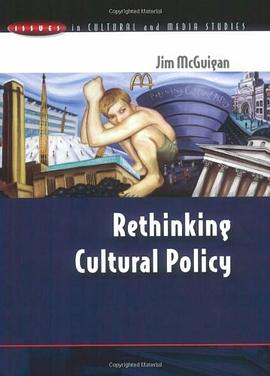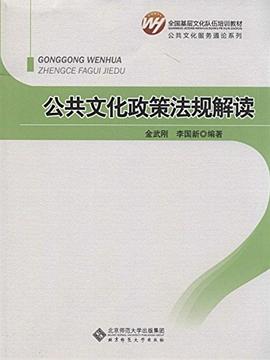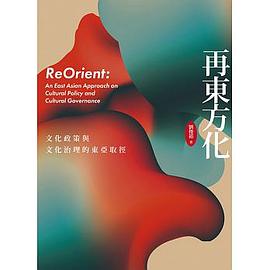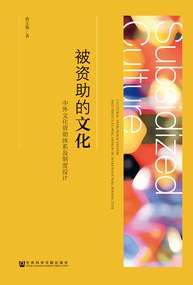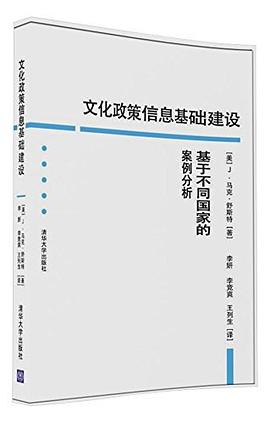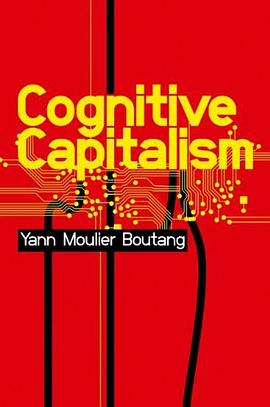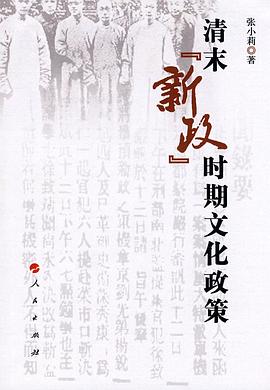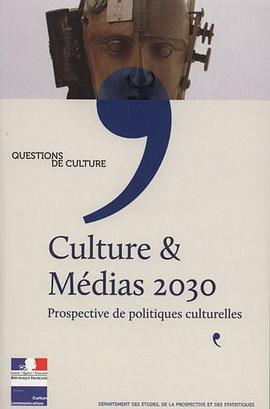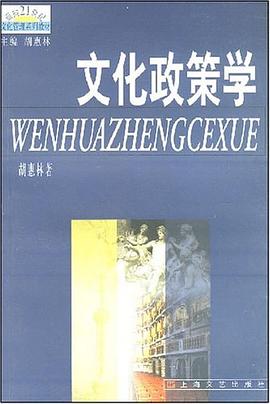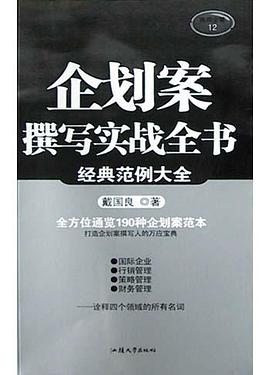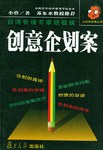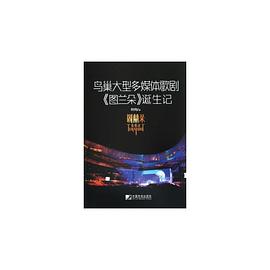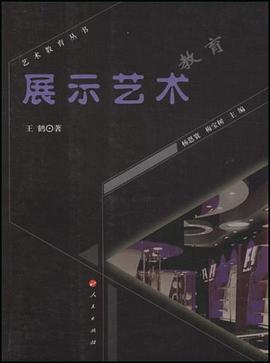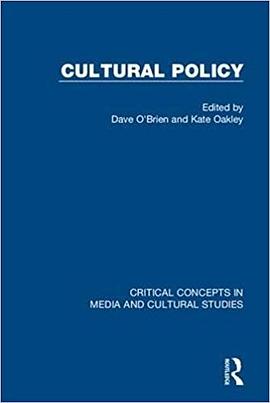

具體描述
Specialists in cultural policy draw on many scholarly literatures and traditions, including but not limited to, media and communication studies, history, sociology, politics, arts management, geography, and cultural studies. Now, this new four-volume collection from Routledge brings together the key texts that form the background, context, and basis for a sophisticated understanding of the topic, materials that have hitherto been scattered throughout a variety of specialist journals and books. Cultural Policy offers advanced students and established researchers alike a comprehensive and carefully ordered ‘mini library’ of the subject’s major works.
著者簡介
圖書目錄
Contents
Acknowledgments
Introduction
1. J. Renciere, ‘Artistic Regimes and the Shortcomings of the Notion of Modernity’, in The Politics of Aesthetics, trans. G. Rockhill (London: Continuum, 2004), pp. 20-30.
2. R. Williams, ‘Culture’, in Keywords, A Vocabulary of Culture and Society (New York, Oxford University Press, 1976), pp. 87-92.
3. G. W. Bowen and J. W. Baumol, ‘On the Rational of Public Support’, in Performing Arts - The Economic Dilemma: A Study of Problems Common to Theatre, Opera, Music and Dance (London, MIT Press, 1968), pp. 369-385.
4. H. S. Becker, ‘Art Worlds and Social Types’, American Behavioural Scientist 19, 6, 1976, 703-717.
5. B. Frey, ‘Cultural Economics - History and Theory’, in F. Snickars (ed.), Culture, Society and Market, The Swedish Research Seminar held at Sigtuna, January 24-25, 2000. Report from the Swedish National Council for Cultural Affairs, pp. 143-153.
6. G. Yudice, ‘Cultural Diversity and Cultural Rights’, Hispanic Issues On Line 5, 1, 2005, 110-137.
7. D. Hesmondhalgh, ‘Media and Cultural Policy as Public Policy: The Case of the British Labour Government’, International Journal of Cultural Policy 11, 1, 2005, 95-109.
8. Y. R. Isar, ‘"Cultural Policy": Towards a Global Survey’, Culture Unbound 1, 2009, 51-65.
9. H. H. Chartrand and C. McCaughey, ‘The Arm's Length Principle and the Arts: An International Perspective - Past, Present and Future’, in M.C. Cummings Jr and J. Mark Davidson Schuster (eds), Who's to Pay for the Arts?: The International Search for Models of Support (American Council for the Arts, N.Y.C, 1989).
10. N. Kawashima, ‘Corporate Support for the Arts in Japan: Beyond Emulation of the Western Models’, International Journal of Cultural Policy 18, 3 2012, 295-307.
11. H. K. Lee, ‘Progress Without Consensus: "Instituting" Arts Council in Korea’, International Journal of Cultural Policy 18, 3, 2012, 323-339
12. HMSO, ‘A Policy for the Arts: The First Steps’, in A Policy for the Arts: The First Steps, Government White Paper HMSO, 1965, pp. 5-18.
13. T. Adorno, ‘Culture Industry Reconsidered’, in The Culture Industry: Selected Essays on Mass Culture (London, Routledge, 1991), pp. 98-106.
14. A. Upchurch, ‘John Maynard Keynes, the Bloomsbury Group and the Origins of the Arts Council Movement’, International Journal of Cultural Policy 10, 2, 2004, 203-217.
15. T. Bennett, ‘Culture and Policy – Acting on the Social’, International Journal of Cultural Policy 4, 2, 2009, 271-289.
16. J. McGuigan, ‘Cultural Policy Studies’, in T. Miller and J. Lewis (eds), Critical Cultural Policy Studies: A Reader (Oxford: Blackwell, 2003), pp. 23 – 42.
17. J. Ahearne, ‘Cultural Policy Explicit and Implicit: A Distinction and Some Uses’, International Journal of Cultural Policy 15, 2, 2009, 141-153.
18. K. V. Mulcahy, ‘Cultural Policy: Definitions and Theoretical Approaches’, The Journal of Arts Management, Law, and Society 35, 4, 2006, 319-330.
19. A. Appadurai, ‘Disjuncture and Difference in the Global Cultural Economy’, Theory, Culture & Society 7, 2, 1990, 295-310.
20. J. Myerscough, extracts from The Economic Importance of the Arts in Great Britain, (Policy Studies Institute, 1988), pp. 1-9, 148-50.
21. A. Girard, ‘French Cultural Policy from Andre Malraux to Jack Lang. A Tale of Modernisation’, International Journal of Cultural Policy 4, 1, 1997, 107-125.
22. S. Hall, ‘Cultural Studies: Two Paradigms’, Media, Culture & Society 2, 1980, 57-72.
23. N. Garnham, ‘From Cultural to Creative Industries: An Analysis of the Implications of the "Creative Industries" Approach to Arts and Media Policy Making in the United Kingdom’, International Journal of Cultural Policy 11, 1, 2005, 15-28.
Volume II
Contents
Acknowledgments
24. S. Cunningham, ‘Cultural Studies from the Viewpoint of Cultural Policy’, in T. Miller and J. Lewis, (eds), Critical Cultural Policy Studies: A Reader (Oxford: Blackwell, 2003), pp. 13-22.
25. S. Burke, ‘Disjuncture and Displacement: The Evolution of the Cultural Policy Regime in the Anglophone Caribbean’, International Journal of Cultural Policy 13, 2, 2007, 169-184.
26. A. Scullion and B. Garcia, ‘What is Cultural Policy Research?’, International Journal of Cultural Policy 11, 2, 2005, 113-127.
27. D. Throsby, ‘Explicit and Implicit Cultural Policy: Some Economic Aspects’, International Journal of Cultural Policy 15, 2, 2009, 179-185.
28. D. Hesmondhalgh and A. C. Pratt, ‘Cultural Industries and Cultural Policy’, International Journal of Cultural Policy 11, 1, 2005, 1-13.
29. K. Oakley, ‘The Disappearing Arts: Creativity and Innovation After the Creative Industries’, International Journal of Cultural Policy 15, 4, 2009, 403-413.
30. M. Banks and D. Hesmondhalgh, ‘Looking for Work in Creative Industries Policy’, International Journal of Cultural Policy 15, 4, 2009, 415-430.
31. J. O’Connor, ‘"A Special Kind of City Knowledge": Innovative Clusters, Tacit Knowledge and the ‘"Creative City"’, Media International Australia, special issue on Creative Networks 112, 2004, 131-149.
32. S. Cunningham, ‘Trojan Horse or Rorschach Blot? Creative Industries Discourse Around the World’, International Journal of Cultural Policy 15, 4, 2009, 375-386.
33. M. Pyykkonen, ‘UNESCO and Cultural Diversity: Democratisation, Commodification or Governmentalisation of Culture?’, International Journal of Cultural Policy 18, 5, 2012, 545-562.
34. J. P. Singh, ‘Culture or Commerce? A Comparative Assessment of International Interactions and Developing Countries at UNESCO, WTO, and Beyond’, International Studies Perspectives 8, 2007, 36-53.
35. U. Staiger, ‘New Agendas? Culture and Citizenship in EU Policy’, International Journal of Cultural Policy 15, 1, 2009, 1-16.
36. M. Rushton, ‘Political Oversight of Arts Councils: A Comparison of Canada and the United States’, International Journal of Cultural Policy 8, 2, 2002, 153-165.
37. E. Belfiore and O. Bennett, ‘Rethinking the Social Impacts of the Arts’, International Journal of Cultural Policy 13, 2, 2007, 135-151.
38. C. Madden, ‘Indicators for Arts and Cultural Policy: A Global Perspective’, Cultural Trends 14, 3, 2005, 217-247.
Volume III
Contents
Acknowledgments
39. H. K. Nielsen, ‘Critical Public Agent or Hired Hand? Perspectives for Research on Cultural Policy’, trans. S. M. Cozart, International Journal of Cultural Policy 5, 2, 1999, 183-198.
40. F. Matarasso, ‘Use or Ornament?’: The Social Impact of Participation in the Arts’ (Stroud: Comedia, 1997), pp. v-x, 1-3.
41. D. Hesmondhalgh, M. Nisbett, K. Oakley and D. Lee, ‘Were New Labour's Cultural Policies Neo-liberal?’, International Journal of Cultural Policy 21, 1, 2015, 97-114.
42. J. McGuigan, ‘Neo-liberalism, Culture and Policy’, International Journal of Cultural Policy 11, 3, 2005, 229-241.
43. L. Gibson, ‘In Defence of Instrumentality’, Cultural Trends 17, 4, 2008, 247-257.
44. J. Holden, Capturing Cultural Value: How Culture has become a Tool of Government Policy (Demos, 2004).
45. S. Selwood et al., ‘John Holden’s Capturing Cultural Value: How Culture has become a Tool of Government Policy’, Cultural Trends 14/1, 53, 2005, 113–128.
46. R. Dworkin, ‘Can a Liberal State Support Art?’, in A Matter of Principle (Harvard University Press, 1985), pp. 221-233.
47. B. S. Frey, ‘What Values Should Count in the Arts? The Tension between Economic Effects and Cultural Value’, in M. Hutter and D. Throsby (eds), Beyond Price: Value in Culture, Economics, and the Arts (New York: Cambridge University Press, 2008), pp. 261-269.
48. E. Chiapello, ‘Evolution and Co-optation: The "Artistic Critique’ of Management and Capitalism’, trans. Stephen Wright, Third Text 18, 6, 2004, 585 – 594.
49. C. Gray, ‘Analysing Cultural Policy: Incorrigibly Plural or Ontologically Incompatible?’, International Journal of Cultural Policy 16, 2, 2010, 215-230.
50. T. Wing Chan and J. H. Goldthorpe, ‘The Social Stratification of Cultural Consumption: Some Policy Implications of a Research Project’, Cultural Trends 16, 4, 2002, 373-384.
51. A. Miles and A. Sullivan, ‘Understanding Participation in Culture and Sport: Mixing Methods, Reordering Knowledges’, Cultural Trends 21, 4, 2012, 311-324.
52. R. Florida, ‘The Economic Geography of Talent’, Annals of the Association of American Geographers 92, 4, 2002, 743-755.
53. T. Miller, ‘A View from a Fossil: The New Economy, Creativity and Consumption - Two or Three Things I Don’t Believe In’, International Journal of Cultural Studies 7, 1, 2004, 55-65.
54. A. Pinnock, ‘Two Cultures: The Use and Non-use of Hypotheses in Cultural Policy Research’, Cultural Trends 17, 3, 2008, 139-146.
55. S. Karttunen, ‘Cultural Policy Indicators: Reflections on the Role of Official Statisticians in the Politics of Data Collection’, Cultural Trends 21, 2, 2012, 133-147.
Volume IV
Contents
Acknowledgments
56. D. O’Brien, ‘Business as Usual: Creative Industries and the Specificity of the British State’, in The Routledge Companion to the Cultural Industries (Abingdon: Routledge, 2015), pp. 452-463.
57. L. Bonet and E. Négrier, ‘The End(s) of National Cultures? Cultural Policy in the Face of Diversity’, International Journal of Cultural Policy 17, 5, 2011, 574-589.
58. I. Ang, Y. R. Isar and P. Mar, ‘Cultural Diplomacy: Beyond the National Interest?’, International Journal of Cultural Policy 21, 4, 2015, 365-381.
59. K. Nurse, ‘Culture as the Fourth Pillar of Sustainable Development’, Small States 11, 2006, pp. 32-48.
60. C. Parkinson and M. White, ‘Inequalities, the Arts and Public Health: Towards an International Conversation’, Arts & Health 5, 3, 2013, 177-189.
61. K. Marsh and E. Bertranou, ‘Can Subjective Well-being Measures be Used to Value Policy Outcomes? The Example of Engagement in Culture’, Cultural Trends 21, 4, 2012, 299-310.
62. G. Crossick and P. Kaszynska, ‘Under Construction: Towards a Framework for Cultural Value’, Cultural Trends 23, 2, 2014, 120-131.
63. K. Oakley and D. O'Brien, ‘Learning to Labour Unequally: Understanding the Relationship between Cultural Production, Cultural Consumption and Inequality’, Social Identities 2016
64. D. Stevenson, G. Balling and N. Kann-Rasmussen, ‘Cultural Participation in Europe: Shared Problem or Shared Problematisation?’, International Journal of Cultural Policy 2015.
65. D. Wright, ‘Making Tastes for Everything: Omnivorousness and Cultural Abundance’, Journal for Cultural Research 15, 4, 2011, 355-371.
66. M. Peters, ‘Why is my Curriculum White?’, Educational Philosophy and Theory 47, 7, 2015, 641-66.
67. K. Ellis and M. Kent, ‘Challenges and Opportunities: The Road Ahead for Disability in a Digital World’, in Disability and New Media (Abingdon: Routledge, 2011), pp. 131-147.
68. D. Beer and R. Burrows, ‘Popular Culture, Digital Archives and the New Social Life of Data’, Theory, Culture, Society 2013.
69. C. Durose, Y. Beebeejaun, J. Rees, J. Richardson and L. Richardson, ‘Towards Co-Production in Research with Communities’, (AHRC, 2012), pp. 4-14.
70. R. Maxwell and T. Miller, ‘Citizens’, in Greening the Media (Oxford, Oxford University Press 2015), pp. 134-156
Index
· · · · · · (收起)
讀後感
評分
評分
評分
評分
用戶評價
相關圖書
本站所有內容均為互聯網搜索引擎提供的公開搜索信息,本站不存儲任何數據與內容,任何內容與數據均與本站無關,如有需要請聯繫相關搜索引擎包括但不限於百度,google,bing,sogou 等
© 2025 book.quotespace.org All Rights Reserved. 小美書屋 版权所有

